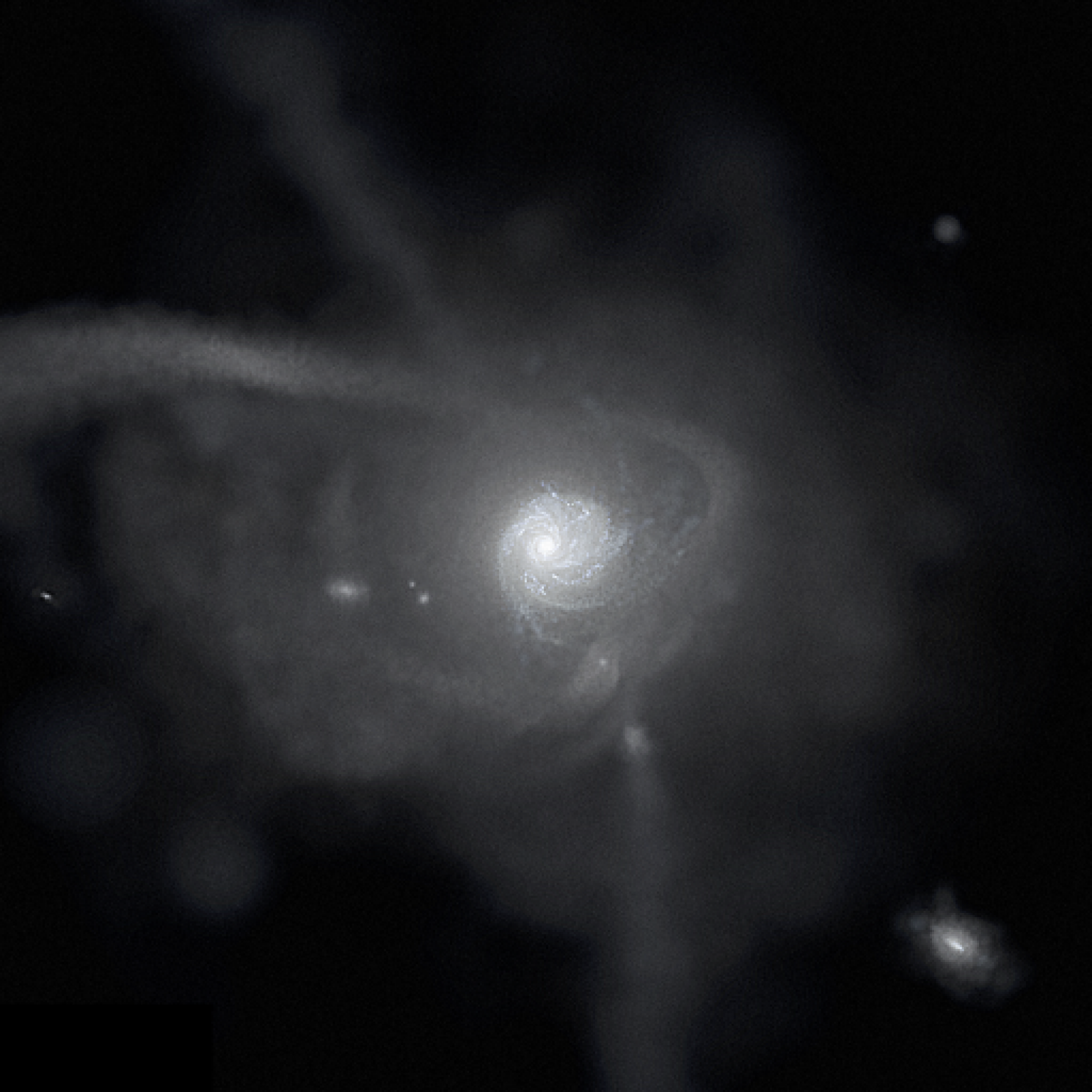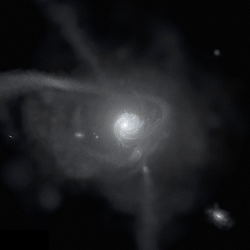I am a professor in the Department of Physics & Astronomy at the University of California, Davis.
I am a theoretical/computational astrophysicist and cosmologist. Using the world’s most powerful supercomputers, I generate cosmological simulations to model the formation of cosmic structures, including galaxies and their stars. My group uses these simulations as theoretical laboratories to develop models of galaxy formation, star formation, stellar nucleosynthesis, and the nature of dark matter. We are particularly interested in understanding our own Milky Way galaxy. The movie above flies through one of my Latte simulations of a galaxy like the Milky Way, showing its evolution over the last billion years.
My group pursues research in theoretical and computational astrophysics and cosmology, primarily in the following areas:
cosmological structure formation
We model the formation of dark-matter + gaseous halos and the galaxies that form inside of them, including the physics of dark matter, gas dynamics, star formation, stellar evolution, and stellar feedback.
galactic dynamics and history
We model the formation history of the Milky Way, Andromeda, and the Local Group across all of their components: dark matter halos, stellar and gaseous disks, giant molecular clouds, star clusters, stellar halos, and low-mass galaxies. We are particularly interested in the formation of galactic disks, their dynamical evolution over time, and the elemental abundance patterns in their stars.
Stellar nucleosynthesis
We model how nucleosynthesis in stars generates all (heavy) elements, and how stars enrich a galaxy like the Milky Way in these elements over time, including mixing in the interstellar medium. We are particularly interested in translating measurements of elemental abundances of millions of stars across the Milky Way to understand and constrain the channels of nucleosynthesis.
dark matter
We use stellar and gas dynamics to measure the spatial and velocity distribution of dark matter around us, to test its particle nature.
FIRE simulation project
We are members and developers of the Feedback In Realistic Environments (FIRE) simulation project. FIRE is pushing the resolution frontier in cosmological simulations of galaxies, using the zoom-in technique to pursue a ‘bottom-up’ approach, resolving key components of the multiphase interstellar medium and stellar evolution, all within a cosmological context. Thus, we seek to improve the predictive power of models for galaxy formation and connect them to underlying stellar populations.
Latte simulations of Milky Way-like galaxies
Within the FIRE collaboration, I am leading the Latte suite of simulations of Milky Way-like galaxies, to understand the formation of our own Milky Way galaxy in a cosmological context. The movie above flies through a Latte simulation, showing its evolution over the last 1 billion years.
connections with observations
While my group’s research is primarily theoretical, we also emphasize close connections with astronomical observations. I am co-leading the MW-6D and M31-6D surveys, two Treasury Programs using the Hubble Space Telescope to measure full 6-D orbital phase-space and star-formation histories for all of the satellite galaxies around the Milky Way and Andromeda (M31).
grant funding
We are grateful for grant funding support from
National Aeronautics and Space Administration (NASA)
Space Telescope Science Institute (STScI)
National Science Foundation (NSF)
Heising-Simons Foundation
Society of Hellman Fellows
Texas Advanced Computing Center
my group, our research, and news
My publications, presentations, media & press
My curriculum vitae
my Teaching, Resources for students and postdocs
My musical life: carillon
awetzel@ucdavis.edu
office
533 Physics Building
University of California, Davis
Department of Physics & Astronomy
One Shields Ave
Davis CA 95616
USA


